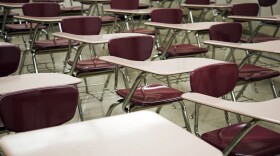Austin public school teachers and principals say they believe students of color are disproportionately disciplined in Austin ISD schools, according to a recently released results from the District Equity Self-Assessment. The survey results show many stakeholders believe there is room to improve equity in student outcomes, student access to academic programs and discipline.
"The overall number of disciplinary numbers appear to be going down," said AISD School Board Vice-President Paul Saldana at AISD's Equity Committee this week. "But my sense is there's still overrepresentation with students of color, special education population and English language learners."

According to Austin ISD, the disciplinary placements or removal rate increased for African American students between 2012 and 2015 to more than 10 percent. Meanwhile, less than one percent of white students were suspended.
The self-assessment examines three equity goals: equitable high school graduation rates and outcomes, equitable access to academic programs and equitable treatment and disciplinary policies.
Teachers, principals and district administration filled out the survey, which asked questions like, “Does the school environment engage and involve parents and guardians?" or “Do all learners have access to quality instructional technology?”
There were four responses: "Not at all," "Not much," "Somewhat" and "To a great extent." Most of the answers fell between "Not much" and "Somewhat." For instance, most respondents feel schools somewhat recruit parents. But, on the whether question as to whether referrals for disciplinary actions are proportionate by race and class, respondents answered "not much."

But school board members wanted to hear more than just data. They wanted to hear what the district plans to do about these disparities.
"[On] national news we hear black men are being shot at a higher rate by police officers," says Trustee Rev. Jayme Mathias. "Here, we're seeing black students are getting suspended at higher rates. What are we doing about that? It's helping us understand the data and making it actionable. It's the 'So, what?' of it all."
Some school board members said they would be open to eliminating suspensions entirely for pre-K and elementary students.
“I personally would support a resolution that kids not be suspended from schools because if you look at secondary suspensions, if you look at middle school kids being sent home, they tend to wander the streets or they get picked up by the police because their parents cannot be home to monitor to them," says Trustee Ann Teich.
The Texas Civil Rights Project has urged Austin ISD to examine how equitable its schools are for years, after it released its own report that showed inequities between schools with higher and low income students. Last year, the civil rights group said it would file a civil rights complaint with the federal government if the district did not act. But many of the lawyers there who pushed the district to conduct the study have left. Meanwhile, some school board members have continued to push the district to conduct the study.
At this week’s meeting, Trustee Saldana continued to express frustration with the speed of the process.
“We approved and voted on March 30, 2015 – almost 17 months ago – to move forward with an equity self assessment," Saldana said. "And the resolution we adopted already provided sort of the framework. We've given you the framework of what we envision would happe, and 17 months down the road we’re still talking about it.”
After the meeting, Saldana struck a more conciliatory tone.
“I think I also have to put it in perspective that we’re probably the only major school district that’s voluntarily doing a self-assessment. I understand it’s going to take some time," he said.
Saldana and other board members say they want the district to have an objective third-party review the assessment, as well as parent input. The school district has not yet acted on those requests, but it's scheduled to discuss the assessment with the full school board again on October 10.




